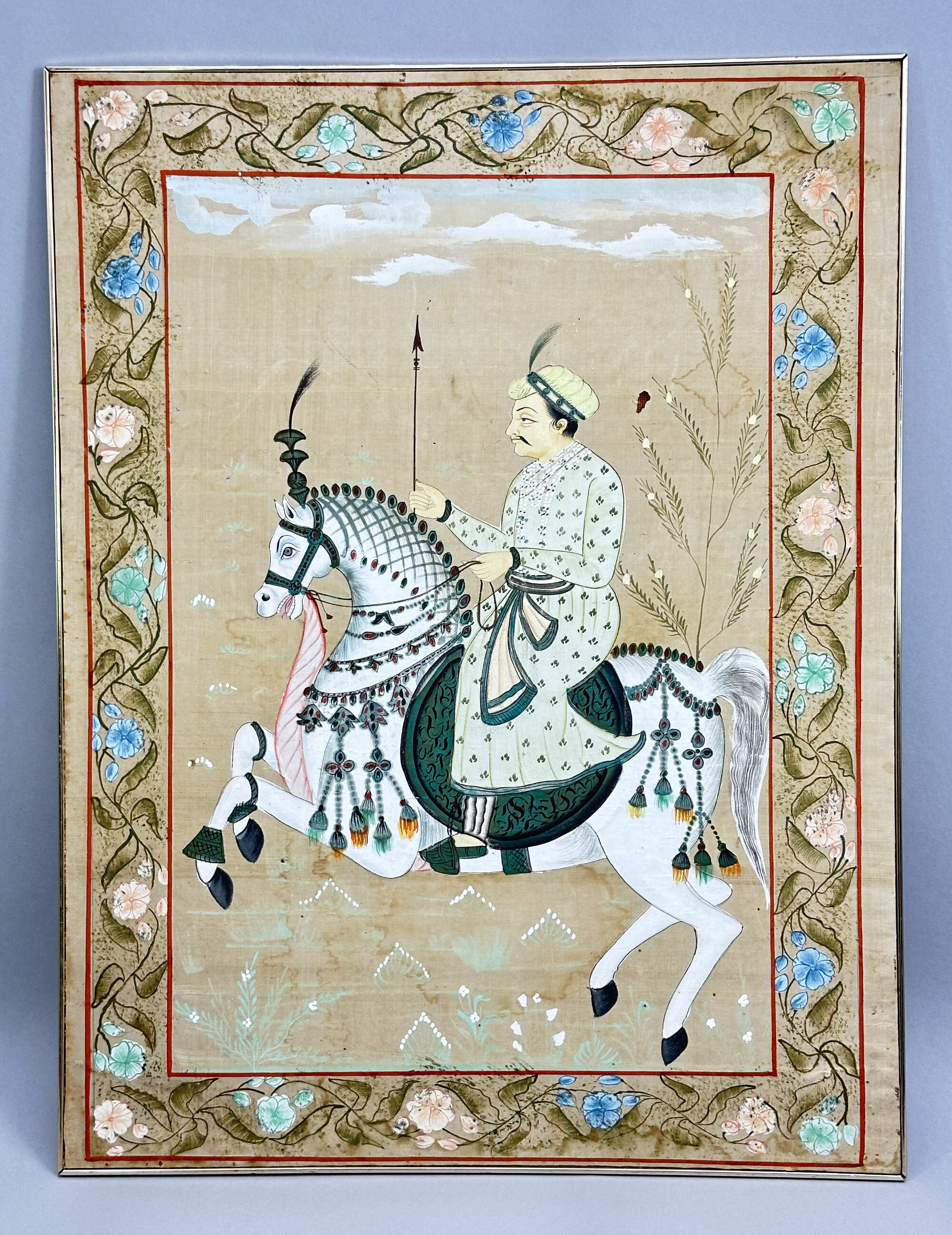
Persian Gouache painting on silk of a horseman, C 19th
Price: £25The style of painting here and the use of silk as the medium are typical of Persian work, and the detail of the brushwork, notably the man’s hair and the horse’s head suggest nineteenth rather than twentieth century workmanship and while a little age worn, this is a striking example of the genre.
Please note that the silk is glued to the hardboard backing at the reverse (see image 10); the simple gilt frame is just fitted to the edge and the piece is not glazed.
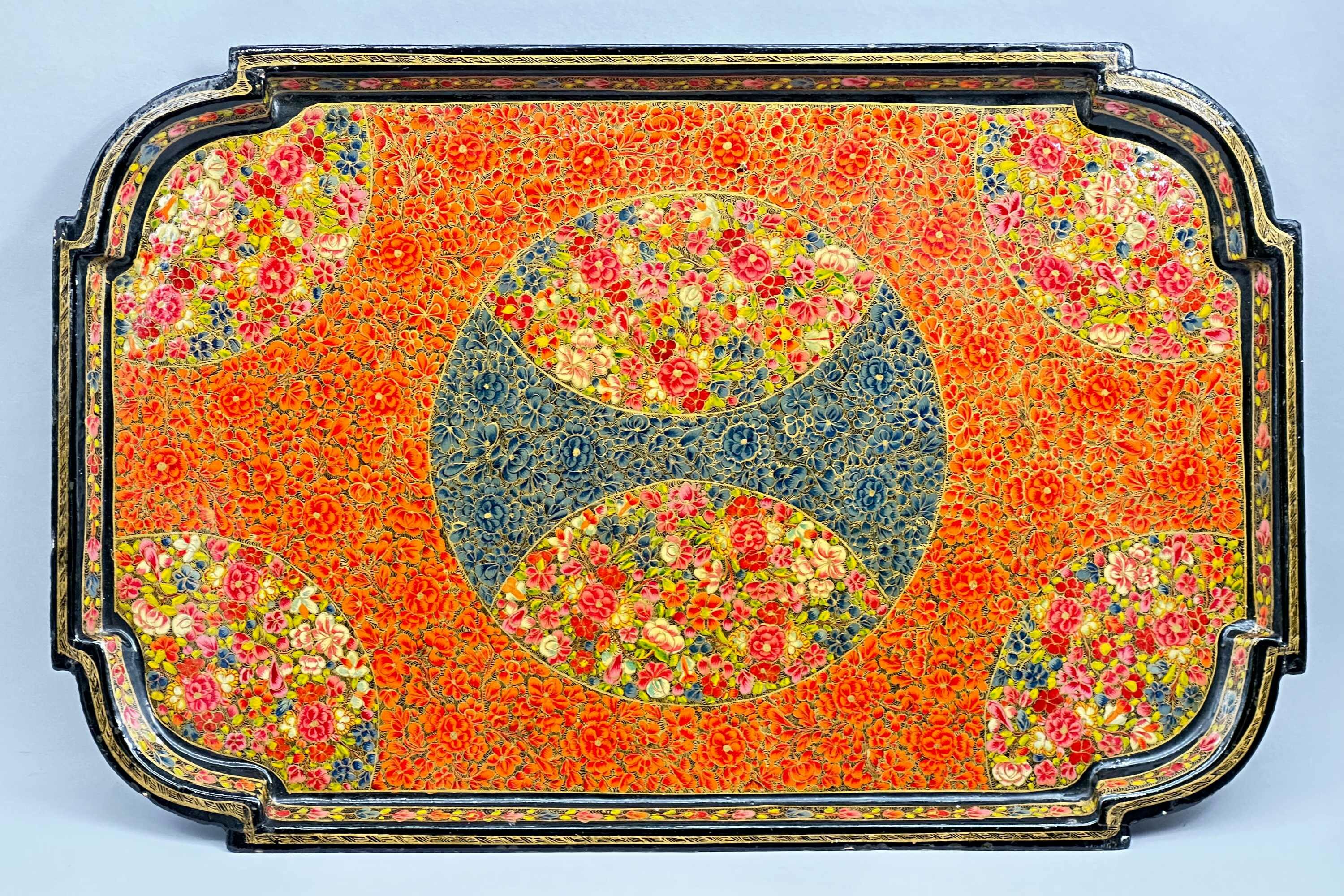
Papier Mâché Tray with Millefiori Decoration, Kashmir, C20th
Price: £55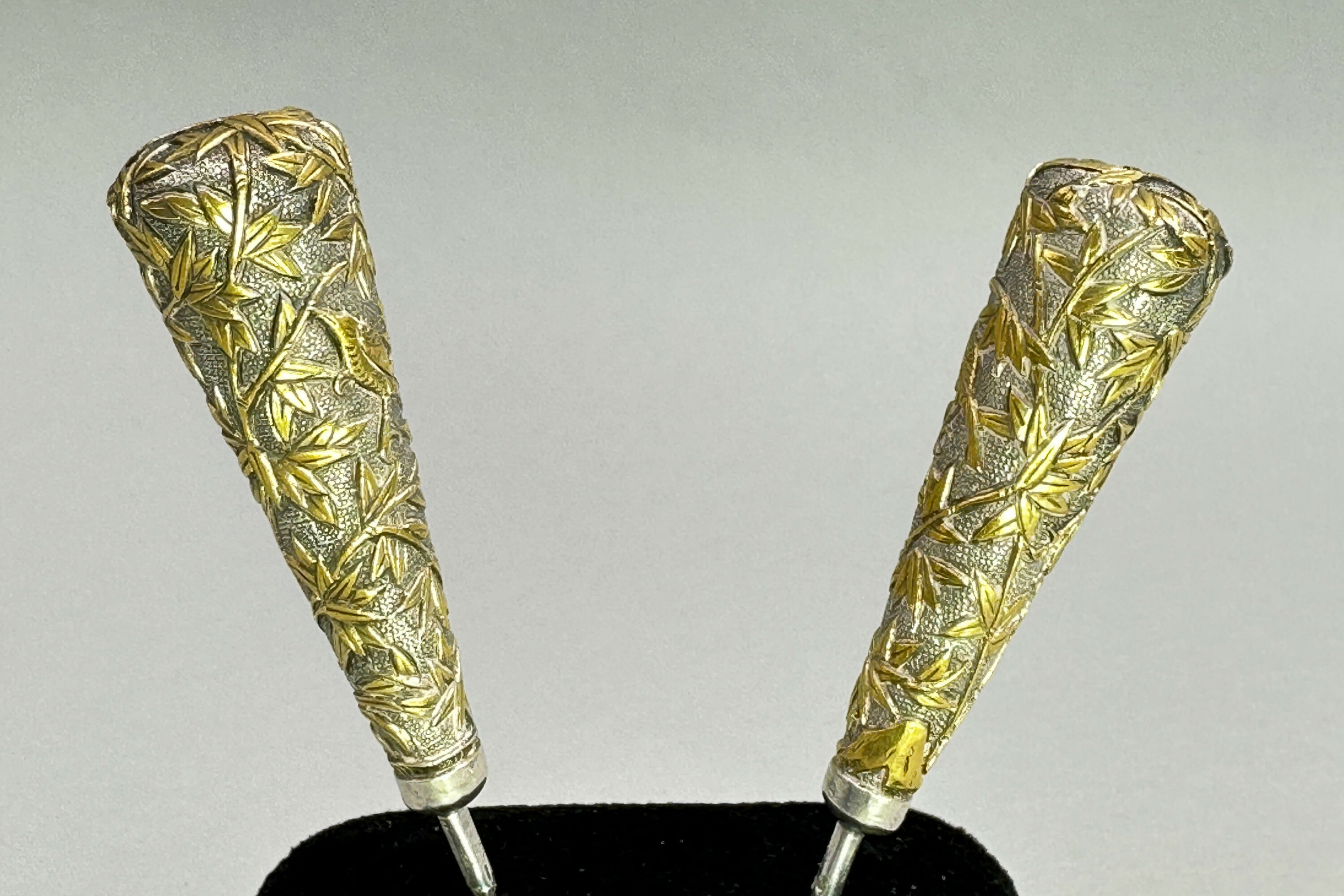
An Unusual Pair of Bradawl Form Sewing Tools, probably Persian C20th
Price: £45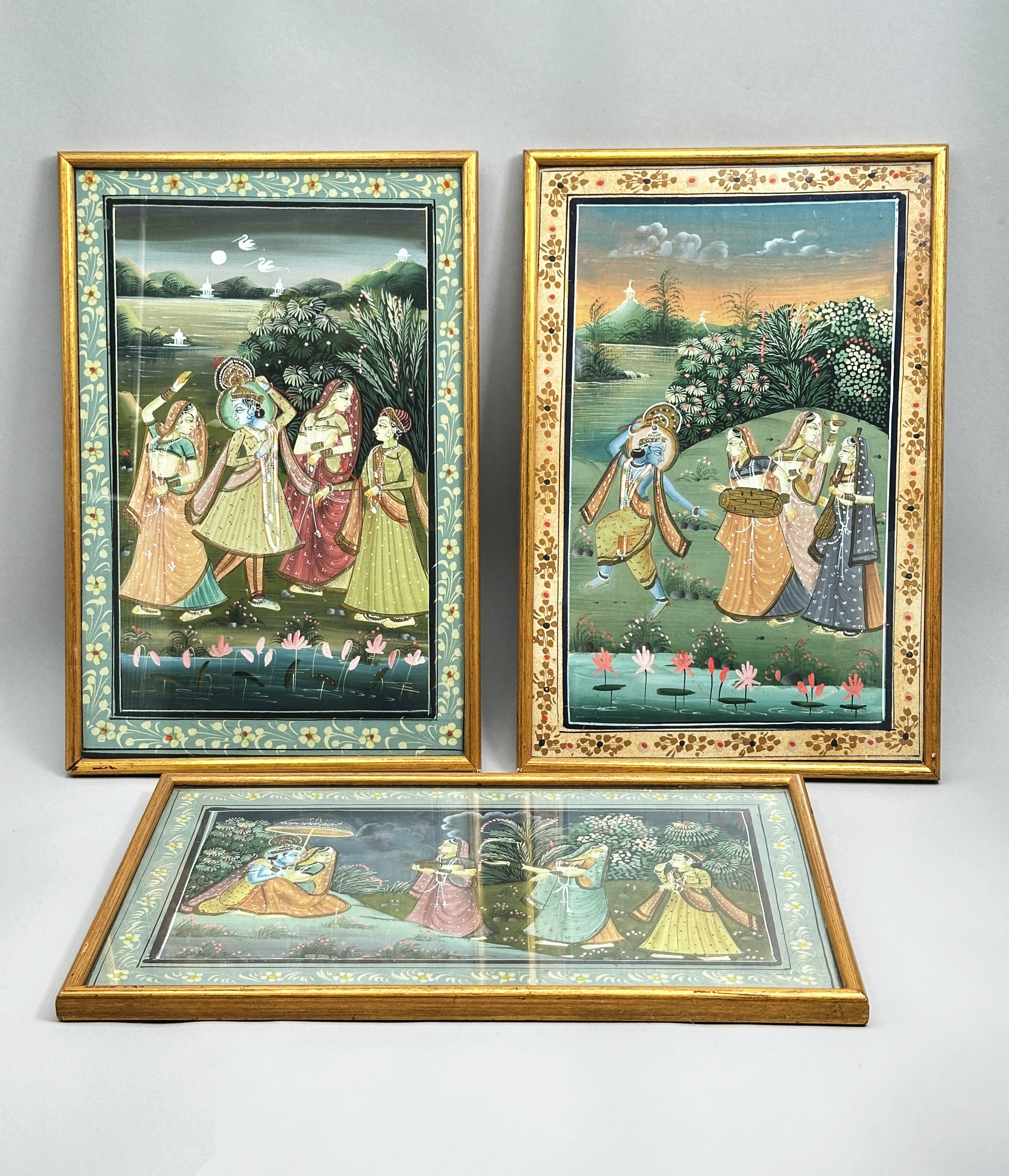
Three Indian gouache paintings depicting Krishna and Radha, framed, first half C20th
Price: £150
A pair of Mughal style carved wood miniature screen picture frames, C20th
Price: £55
Brass and Enamel Campaign Serving Set, Made in British India mark, 1920s
Price: £45
Lacquer Box in the form of a Duck, possibly Persian C20th
Price: £35
Persian Red Lacquer Box in the form of a Pumpkin, late 19th century
Price: £35
Outstanding Ottoman silver marriage mirror, Turkey early 20th century
Price: £125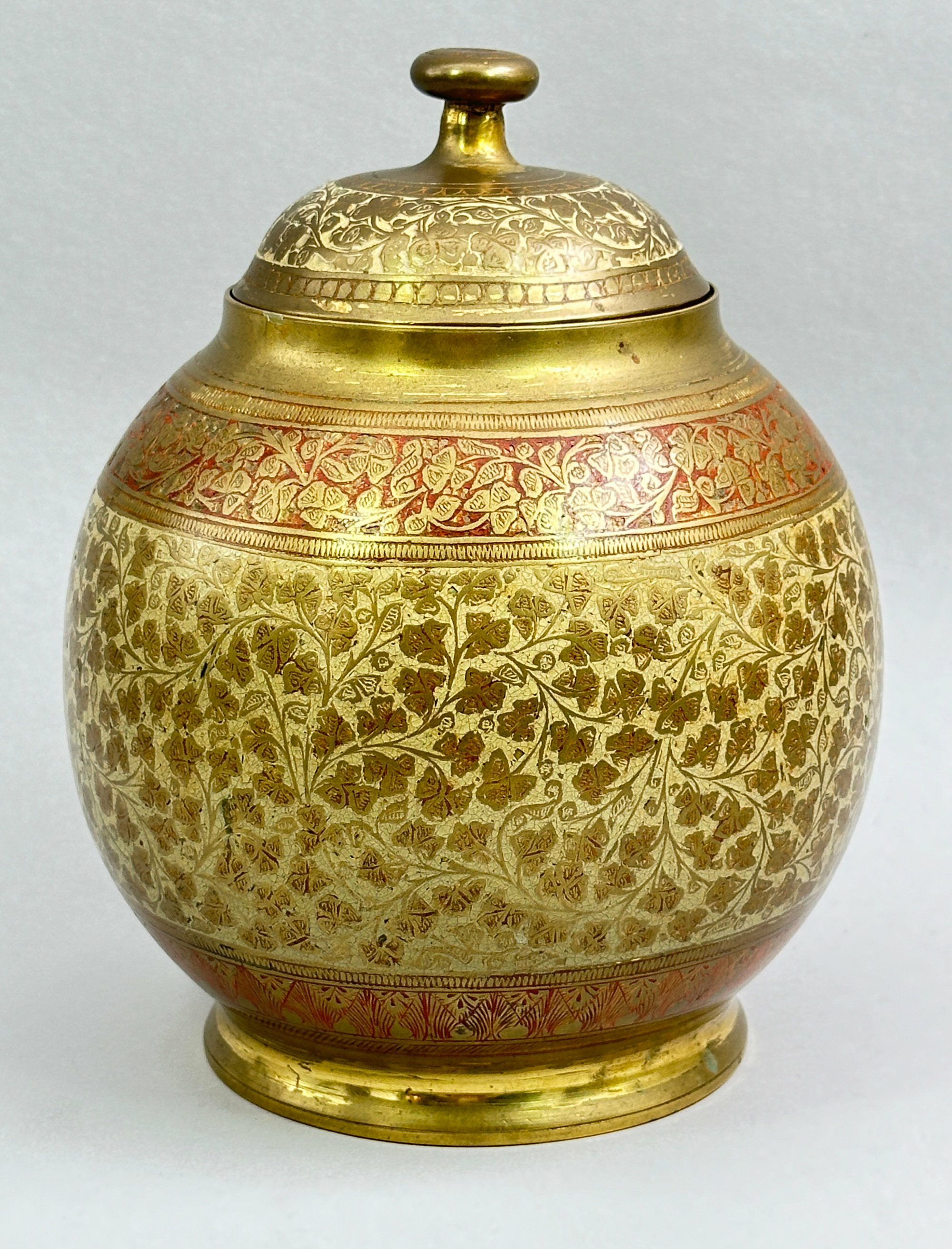
Indian Brass Potiche and Cover, early C20th
Price: £45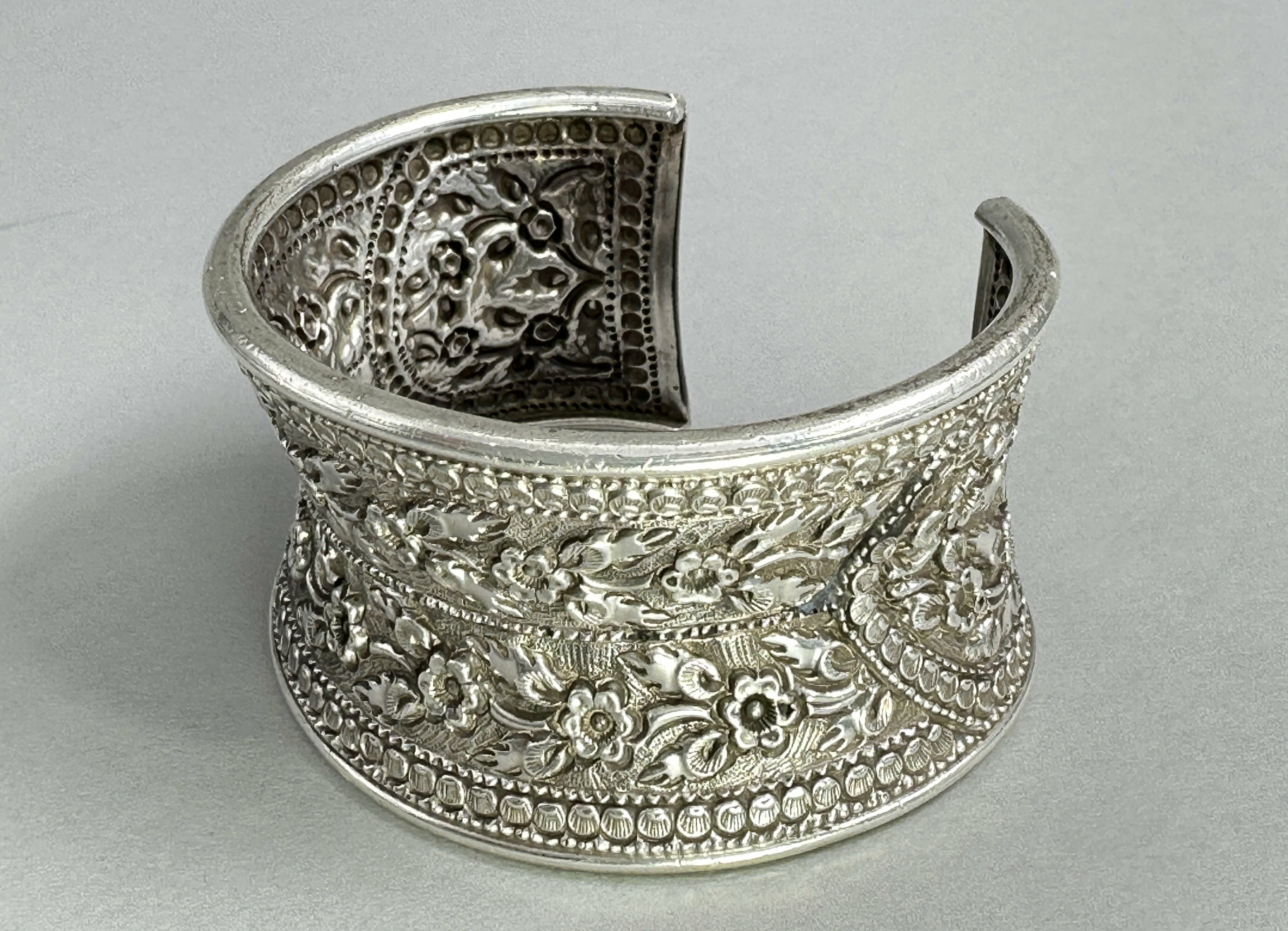
Indian silver repousse cuff bracelet, c1920
Price: £85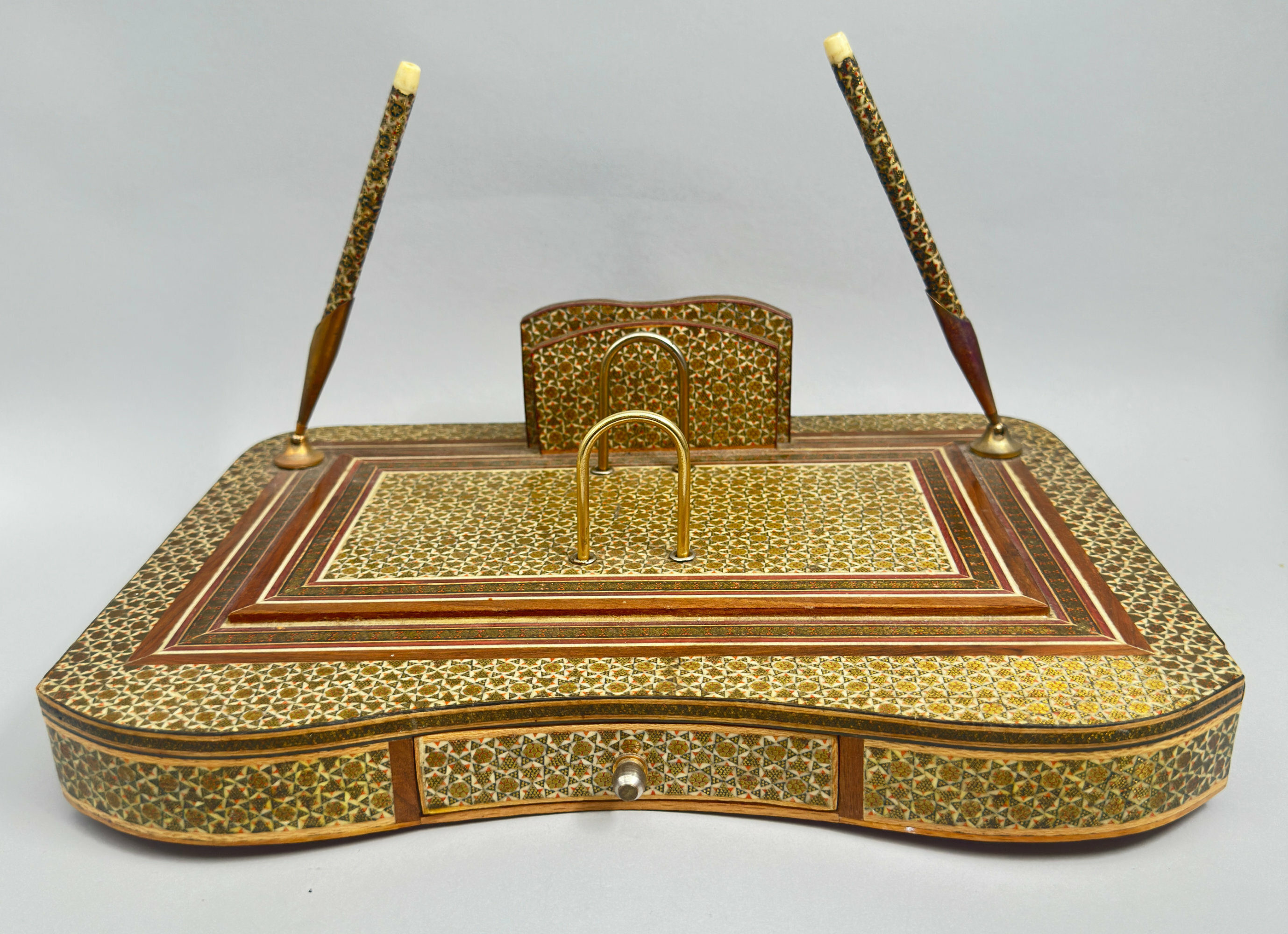
Persian Marquetry Khatam Kari Desk Set, second half C20th
Price: £55The intricate marquetry decoration used here, with its repeating star form pattern, is called ‘Khatam’ work. Khatam is the capital of Khatam County in Iran and is the centre for craftsmen working in this technique. Khatam is a Persian version of marquetry in which the surface of wooden articles is decorated with small pieces of wood, bone and metal formed into precisely-cut geometric shapes. The process is time consuming involving the cutting of the shapes and gluing them in place, followed by smoothing, oiling and polishing. In Persian, the work is known as ‘Khatam kari’, ‘the art of crafting Khatam ware’.
These desk sets occur in a wide variety of forms. The drawer is less commonly found and decorated pen holders are, as said above, most unusual. These sets seem to have been made from the 1950s onwards. The use of a ‘biro’ pen indicates a dating from the 1960s onwards and perhaps this example is a bit later than that, but the workmanship speaks for itself and the piece has survived in excellent condition with minimal damage, providing a truly elegant ‘desk tidy’ for the contemporary study!
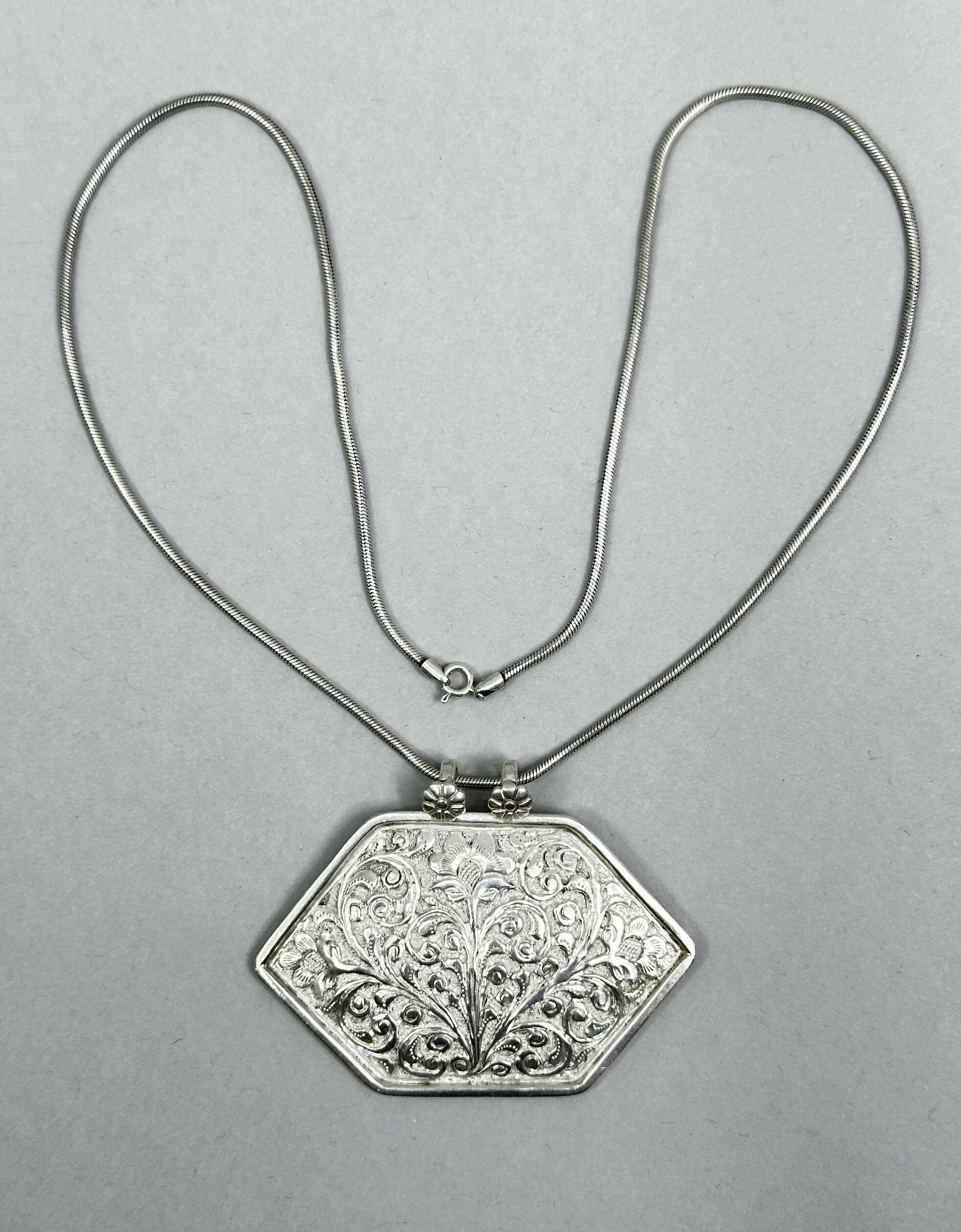
Very fine Indian silver repousse plaque Necklace, c1970
Price: £55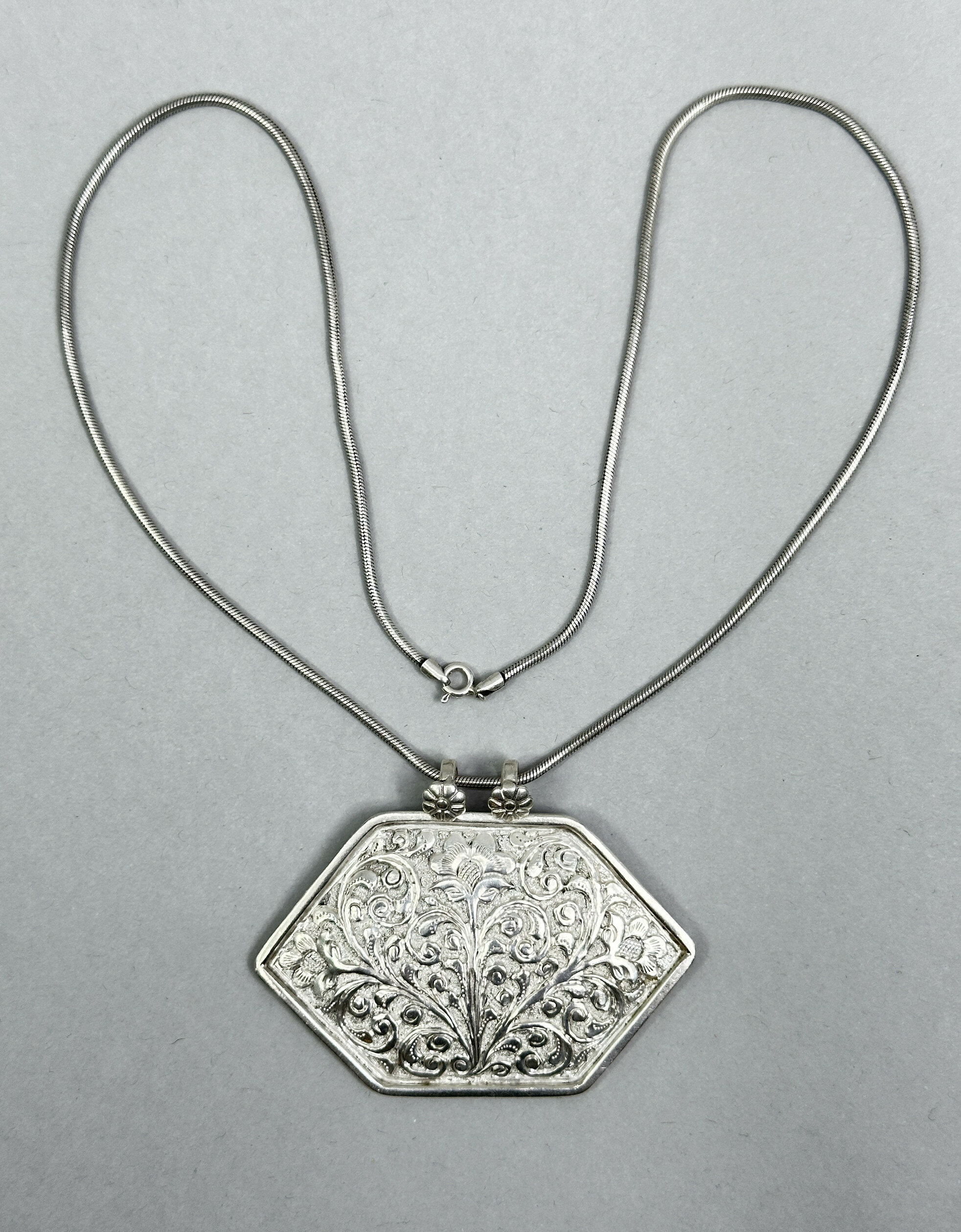
Very fine Indian silver repousse plaque Necklace, c1970
Price: £85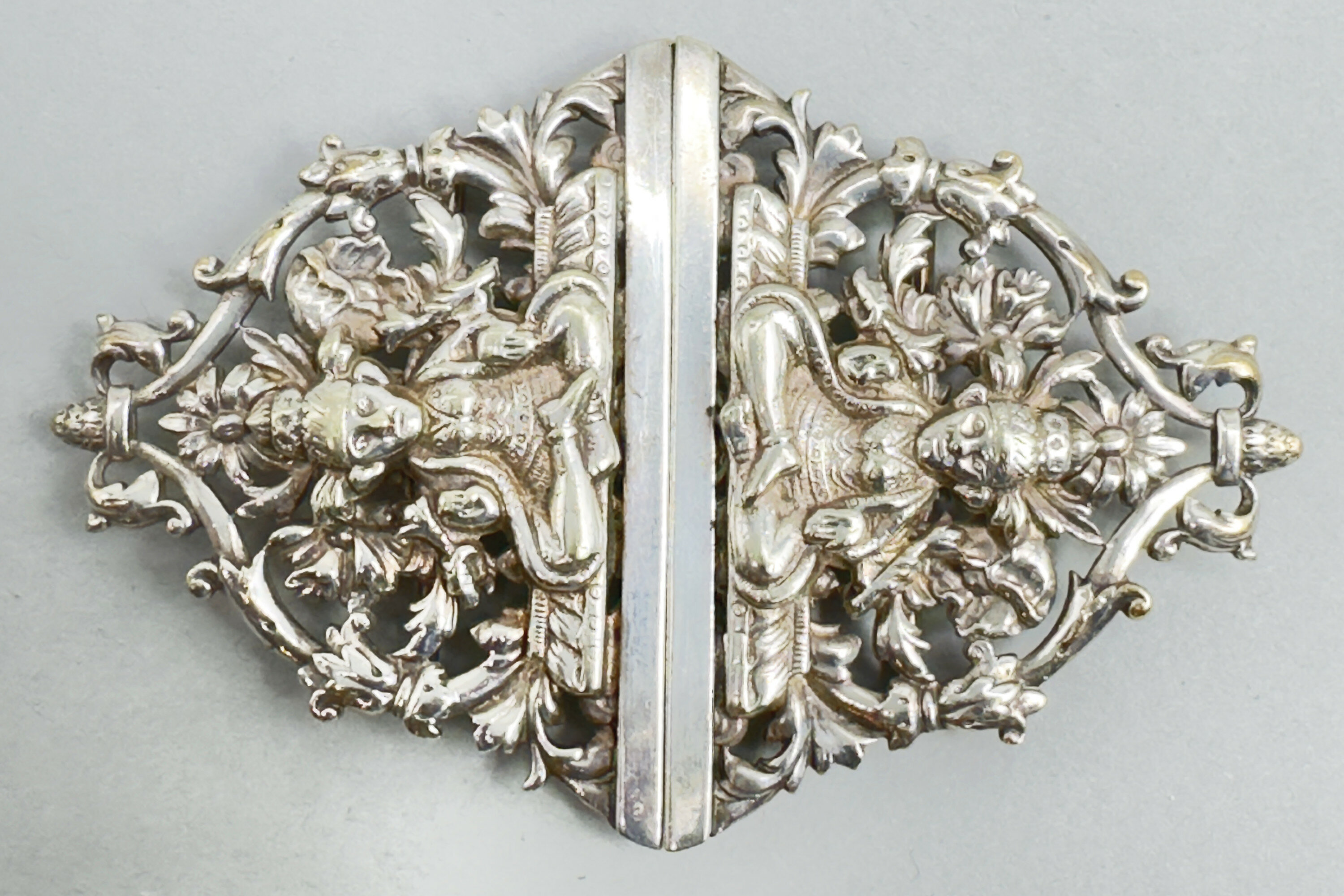
Indian silver buckle with Buddha figures, marked, 1920s
Price: £55
Indian carved Soapstone Figure of an Elephant and Baby Elephant
Price: £25
Balinese tigers eye Necklace, C20th
Price: £55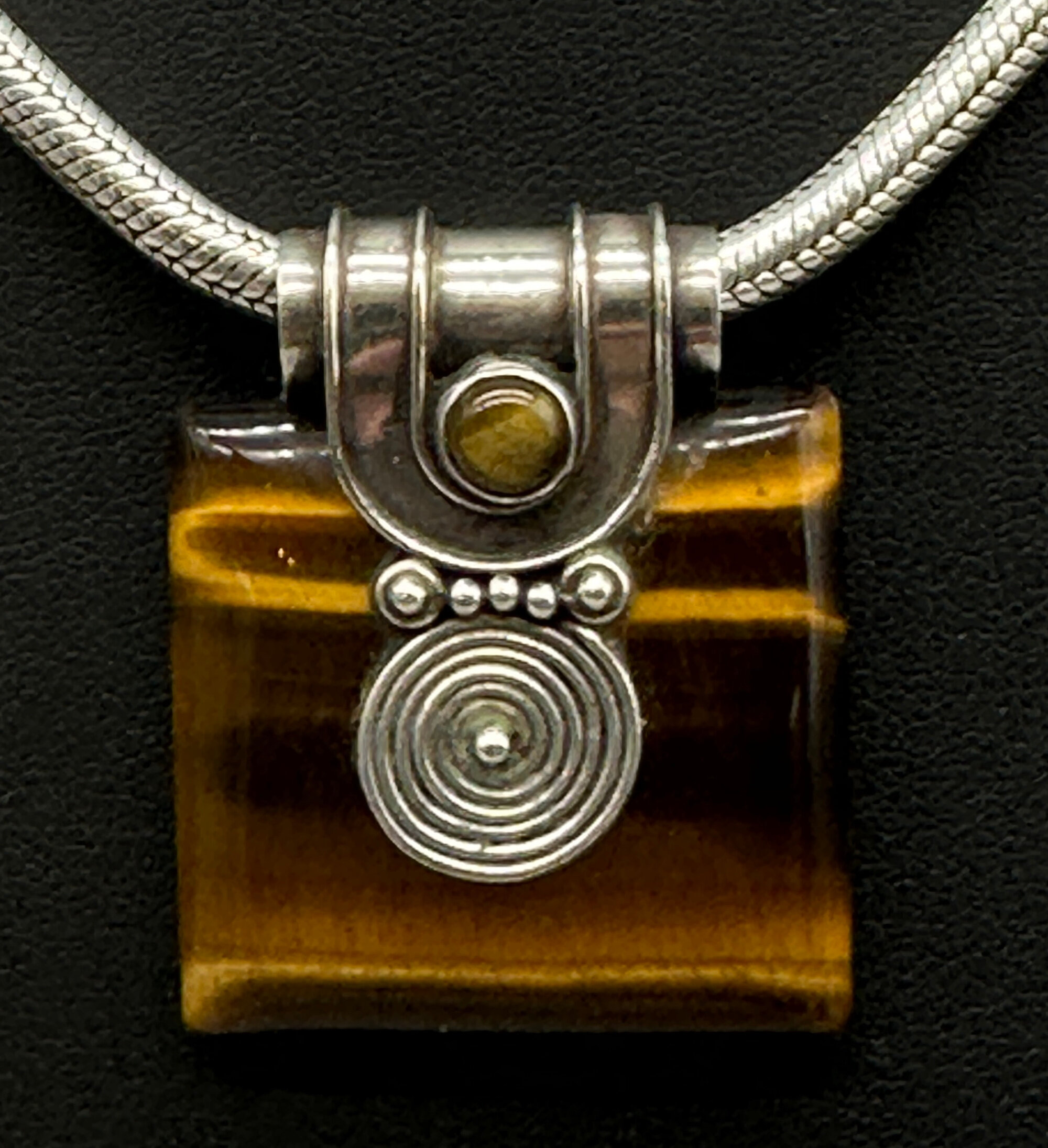
Balinese tigers eye Necklace, C20th
Price: £50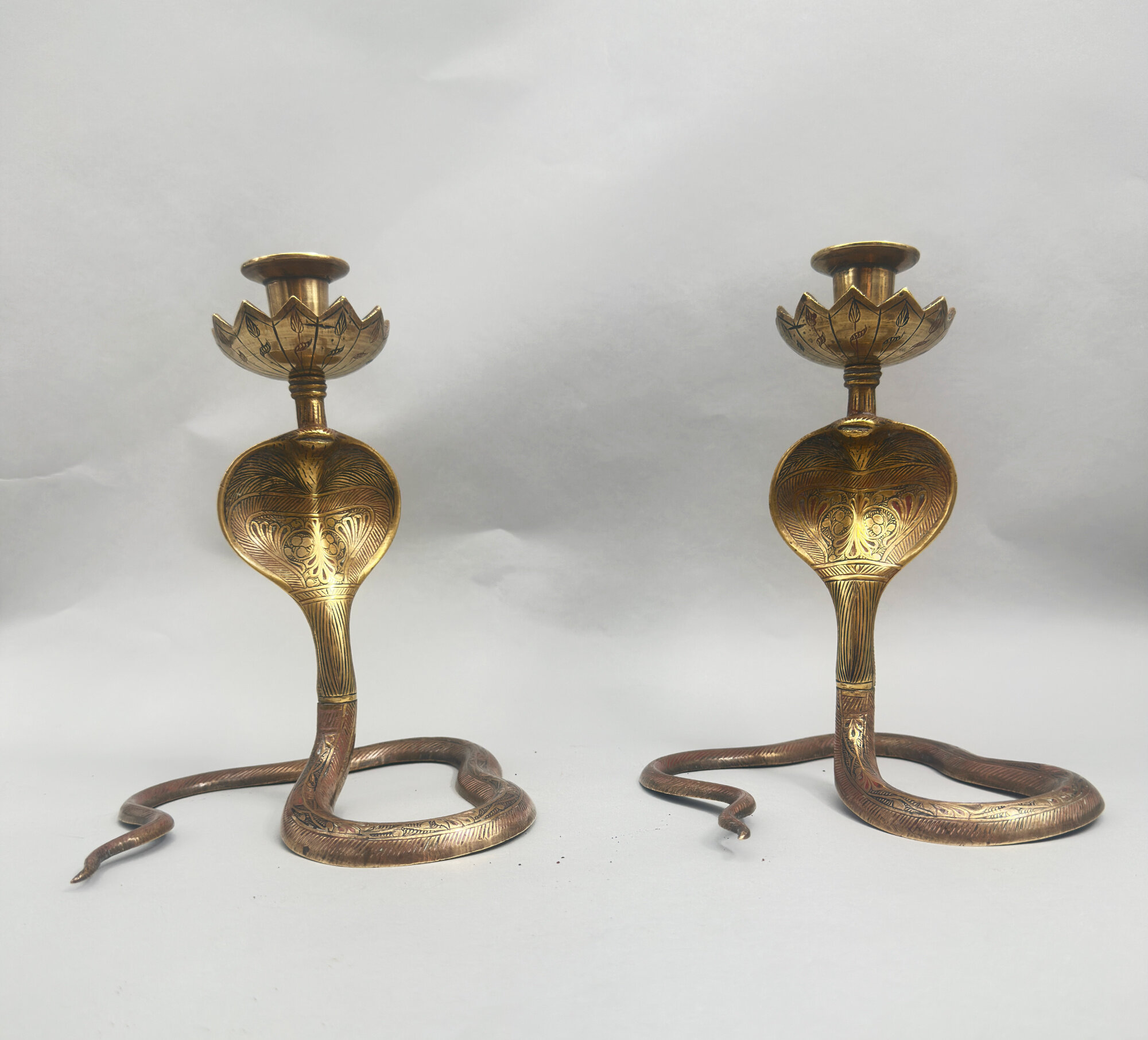
Pair of engraved and enamelled Brass Cobra Candlesticks, Indian c1900
Price: £180
Silver metal Perfume Bottle Necklace, probably Indian early C20th
Price: £55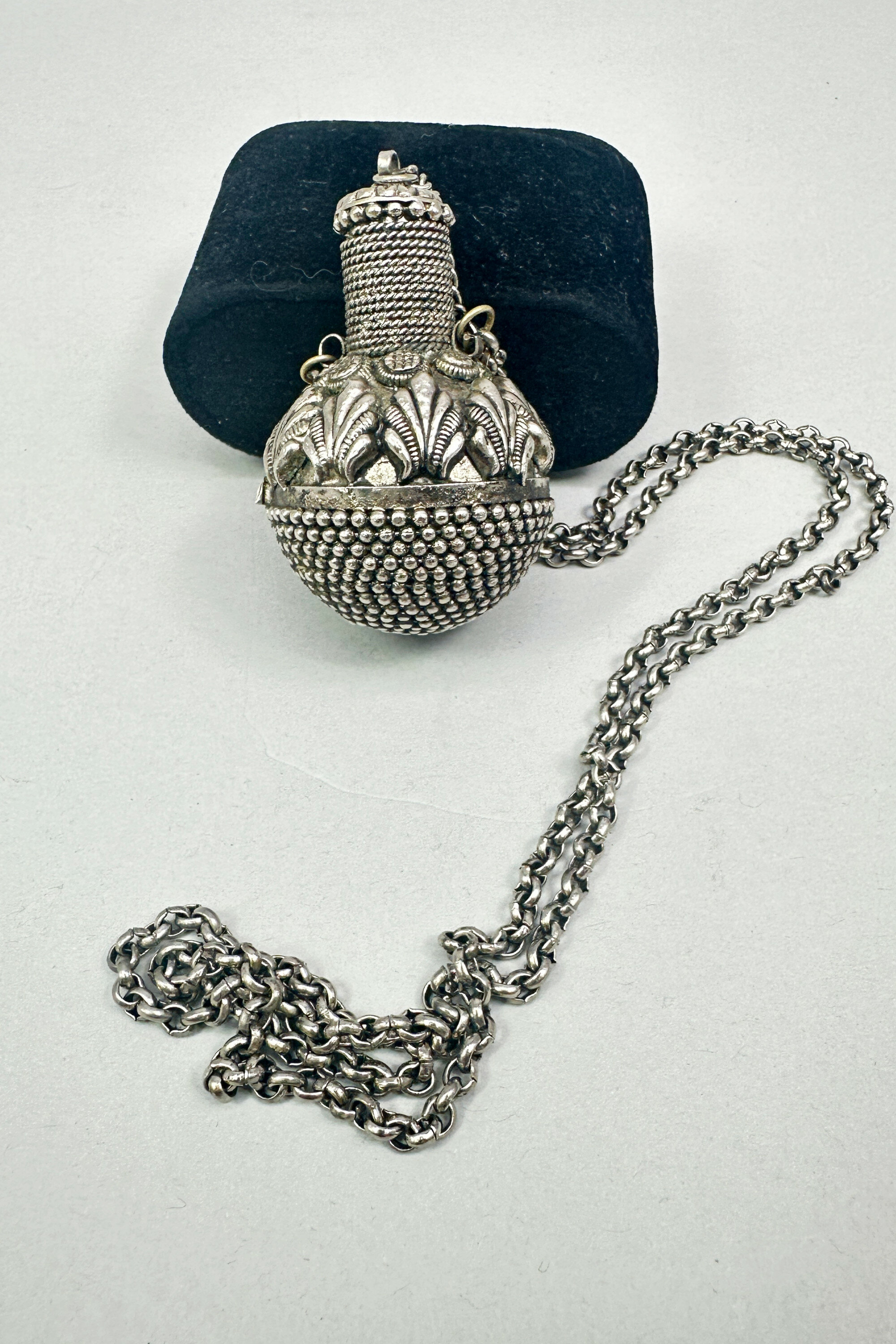
Silver metal Perfume Bottle Necklace, probably Indian early C20th
Price: £55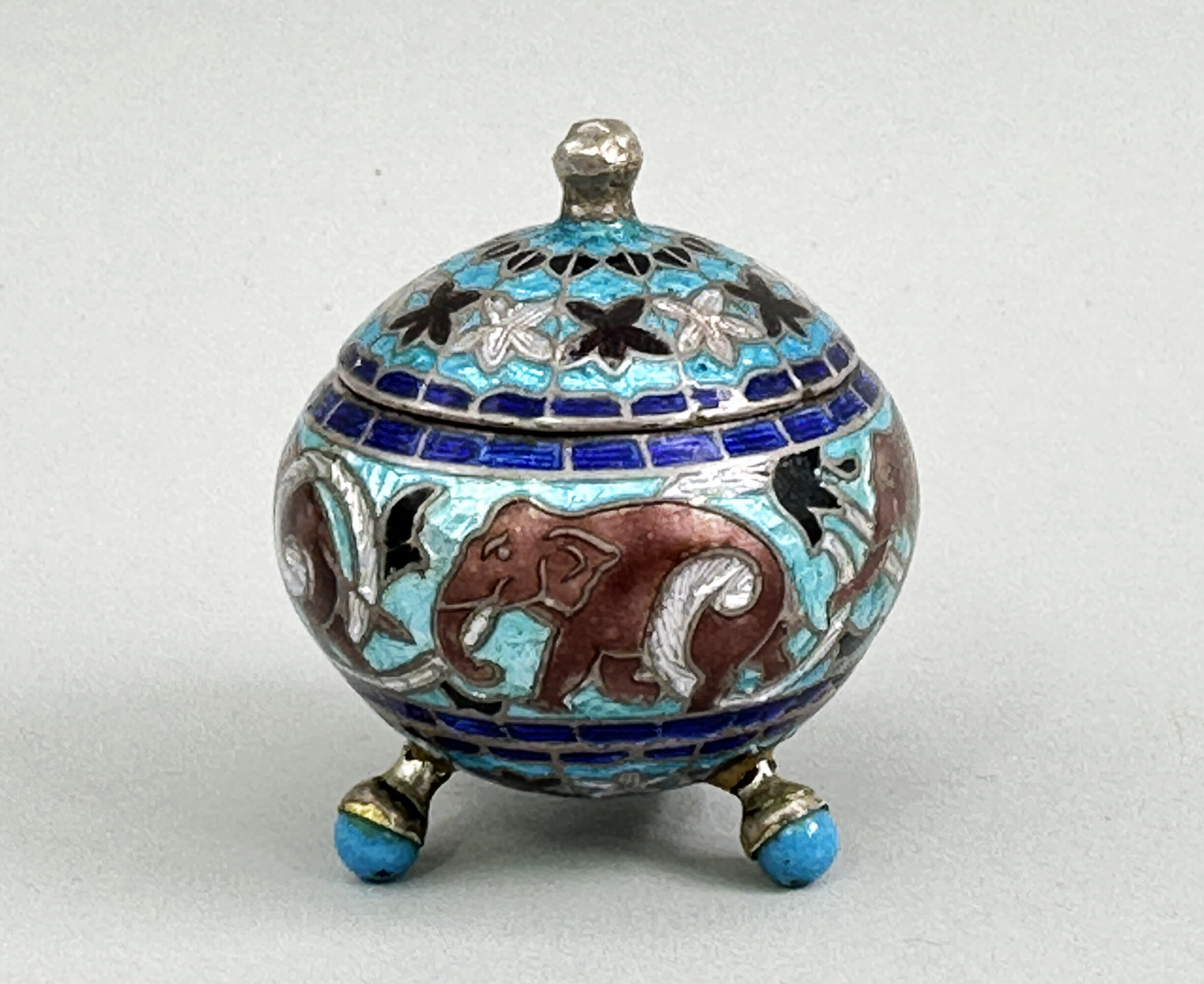
Indian Silver and Enamel pill or trinket Box, early C20th
Price: £55
A Large Islamic Pewter Ewer, C20th
Price: £45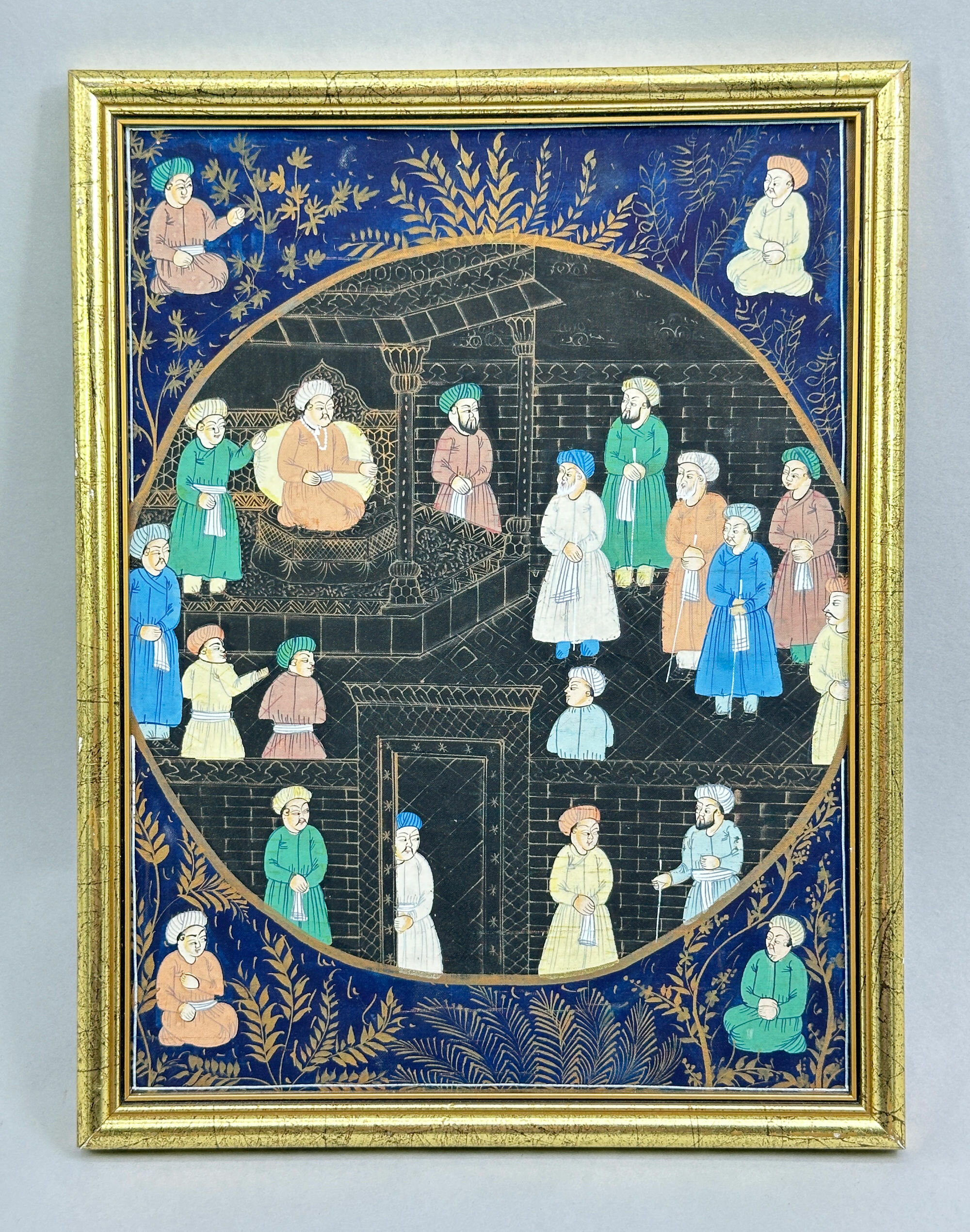
A Mughal style Gouache Painting depicting a Dignitary and Attendants, C20th
Price: £75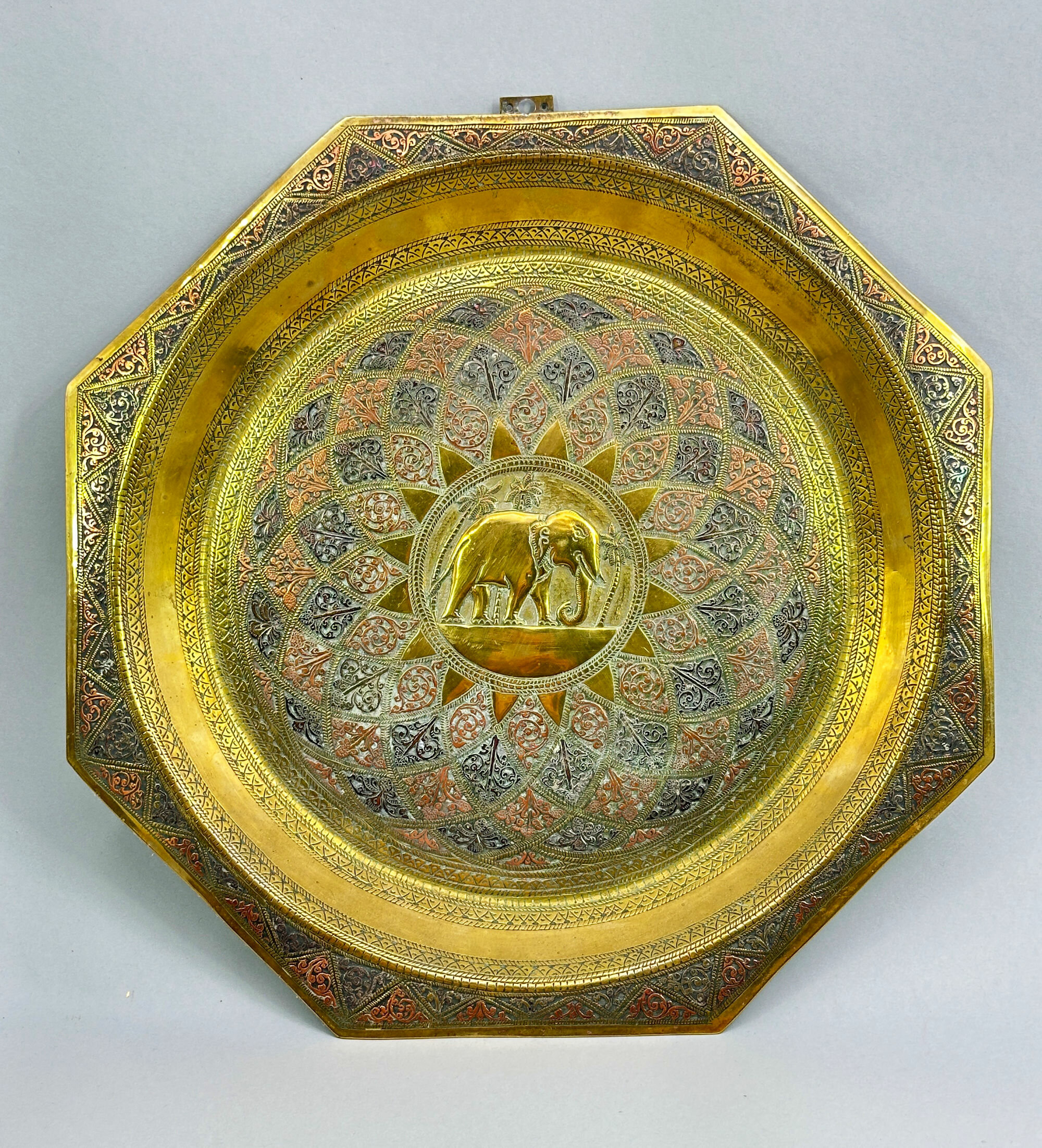
An Octagonal Brass Tray with a roundel of an elephant, probably Persian early C20th
Price: £45
Unique 40 strand micro coral bead necklace, India 1910
Price: £150
Indian Carved Wood Tobacco Jar with Jungle Scene, mid C20th
Price: £25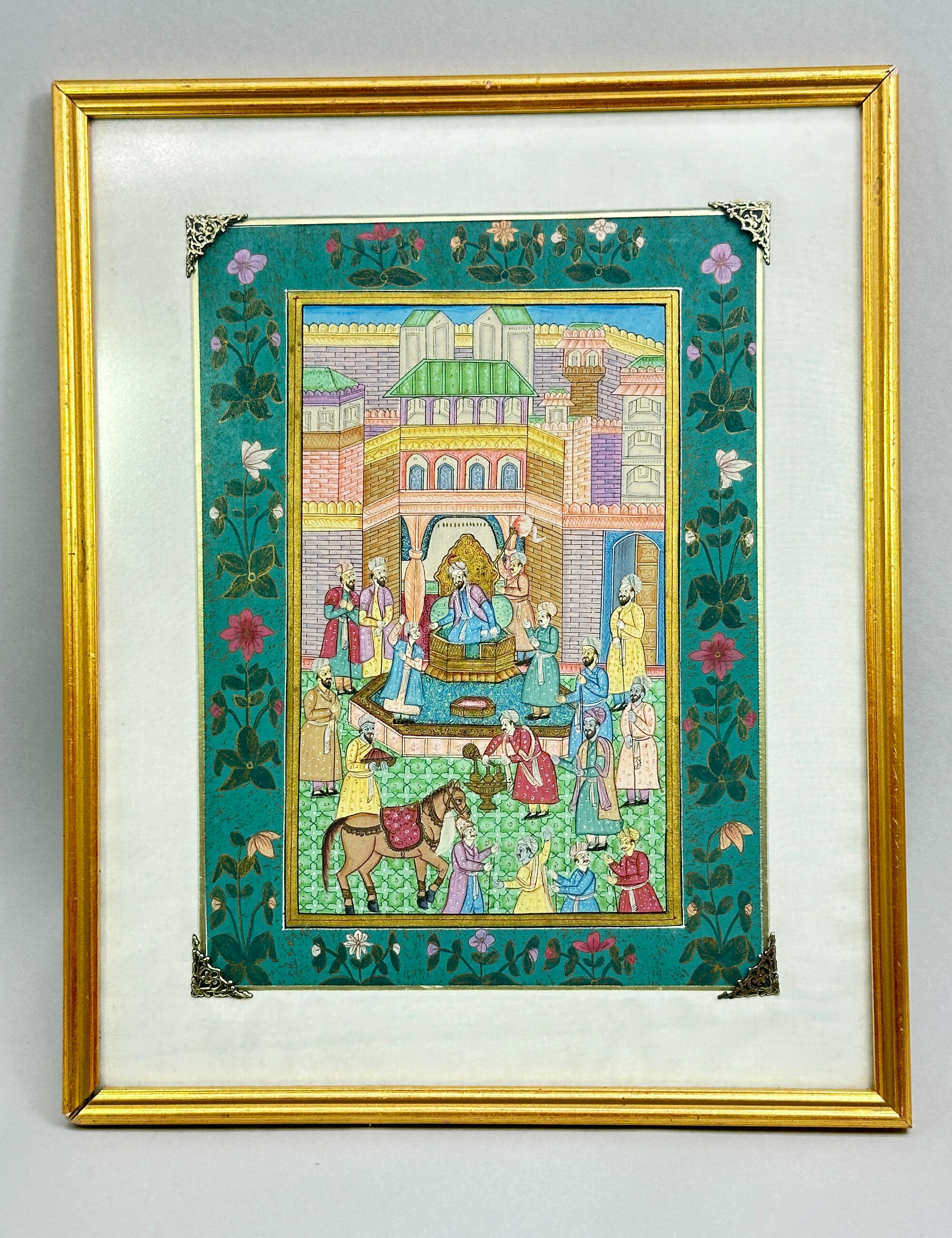
Gouache Painting of a Court Figure Scene, Indian or Persian, C20th
Price: £45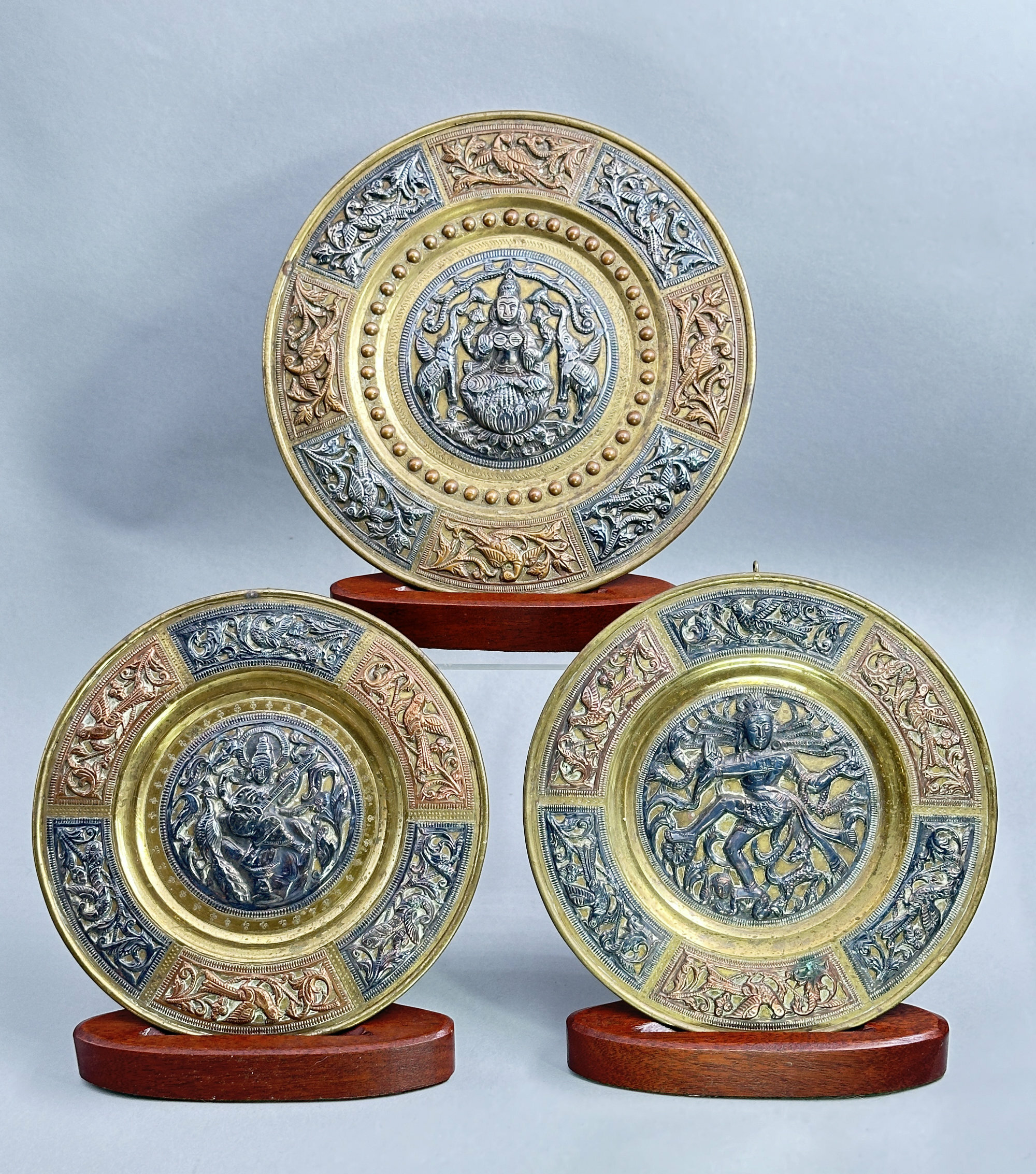
Three Indian Brass hanging plates, Thanjavur, C20th
Price: £55The style of decoration here is typical of the art brass hanging plaques produced by the metalworkers of Thanjavur, formerly known as Tanjore, from the late eighteenth century onwards. A Tanjore Art Plate consists of three components: the base plate (brass), a circular central relief panel of a deity worked in silver surrounded by relief panels in copper and silver often depicting flowers. Various deities are depicted here including the well known many armed Shiva. All the reliefs have milled borders but the wells are finished differently, some with engraved designs and one with circular bosses. Dating is probably to the mid C20th but the style of these pieces was continuous and relatively unchanging so an earlier period of manufacture is quite possible.
NB Stands for display purposes only and not included

Persian silver bracelet with inset enamel plaques, c1930
Price: £125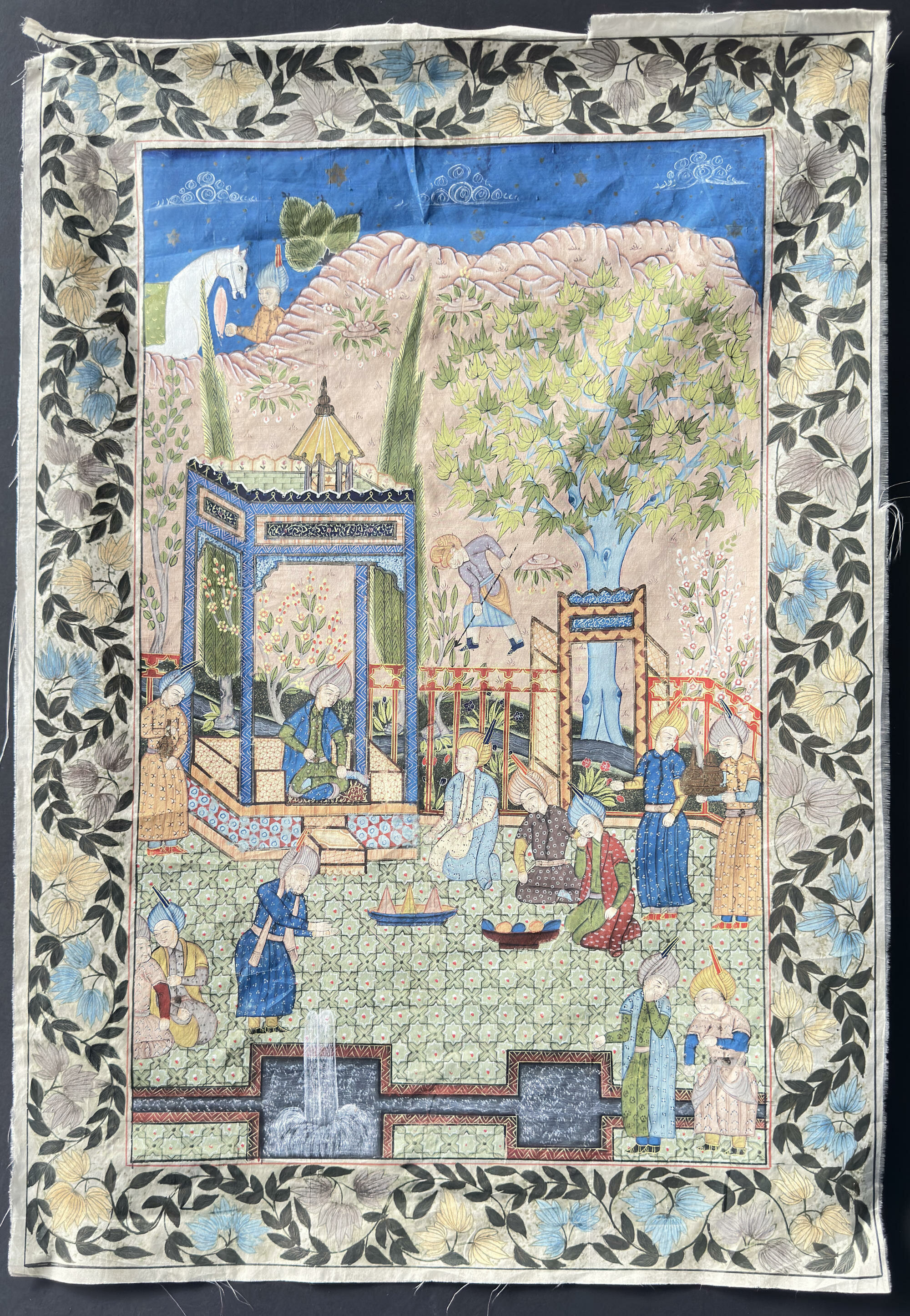
Persian Painting on Silk depicting Courtiers in a Palace Scene, C19th/C20th
Price: £75The ‘Khamsa’ (Quintet or Quinary) is the best known work of Nizami Ghanjavi (c1141 – 1209) considered the greatest romantic epic poet in Persian literature. It comprises five long narrative poems the first of which is ‘Makhzan-ol-Asrar’ (The Treasury or Storehouse of Mysteries) and contains an episode where two physicians agree to fight each other with poison: each would give the other a poison and the doctors would then attempt, by their skill, to provide an antidote. One doctor succeeds but the other has less luck and in the version of the scene mentioned above is depicted lying ill on the ground.
The Khamsa was a popular subject for lavish manuscripts illustrated with painted miniatures at the Persian and Mughal courts in later centuries. The British Museum picture mentioned above, for example, comes from a manuscript created for the Mughal Emperor Akbar in the 1590s. Scenes from these works were then copied or adapted in turn by Persian artists in the late nineteenth and early twentieth centuries which is what we have here. The quality of the execution remains high producing a highly decorative example of the best Persian work.
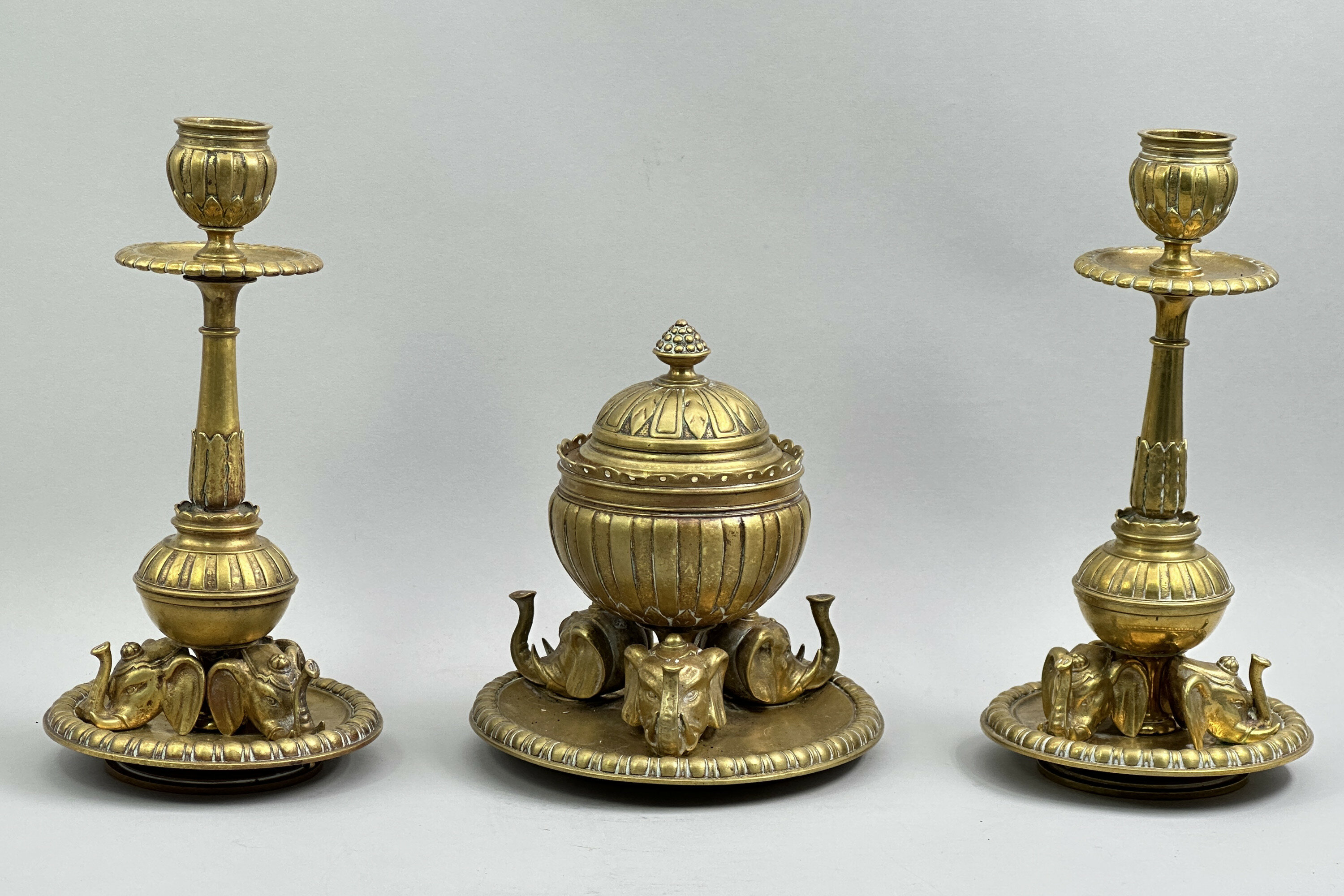
Unusual Brass Table or Desk Set with Elephant Heads, Indian, first half C20th
Price: £240The craftsmanship of this set is self evident both in the quality and weight of the brass and the casting techniques used. Its purpose is less certain and there are no easy parallels. The central vessel might have been designed for incense (although the cover is solid rather than openwork) in which case we could have a table ornament here, but the interior of the vessel can seem to resemble an inkwell in which case we might have a desk set. It's new owner will have to decide! Style of decoration suggests India in the early part of the C20th and this set would then be one of the many pieces exported to the Britain from India at that time and which became very much a feature of contemporary domestic interiors.

Stunning Amber and Islamic silver necklace
Price: £45
Silver Cricket Box, Islamic probably Persian, early C20th
Price: £110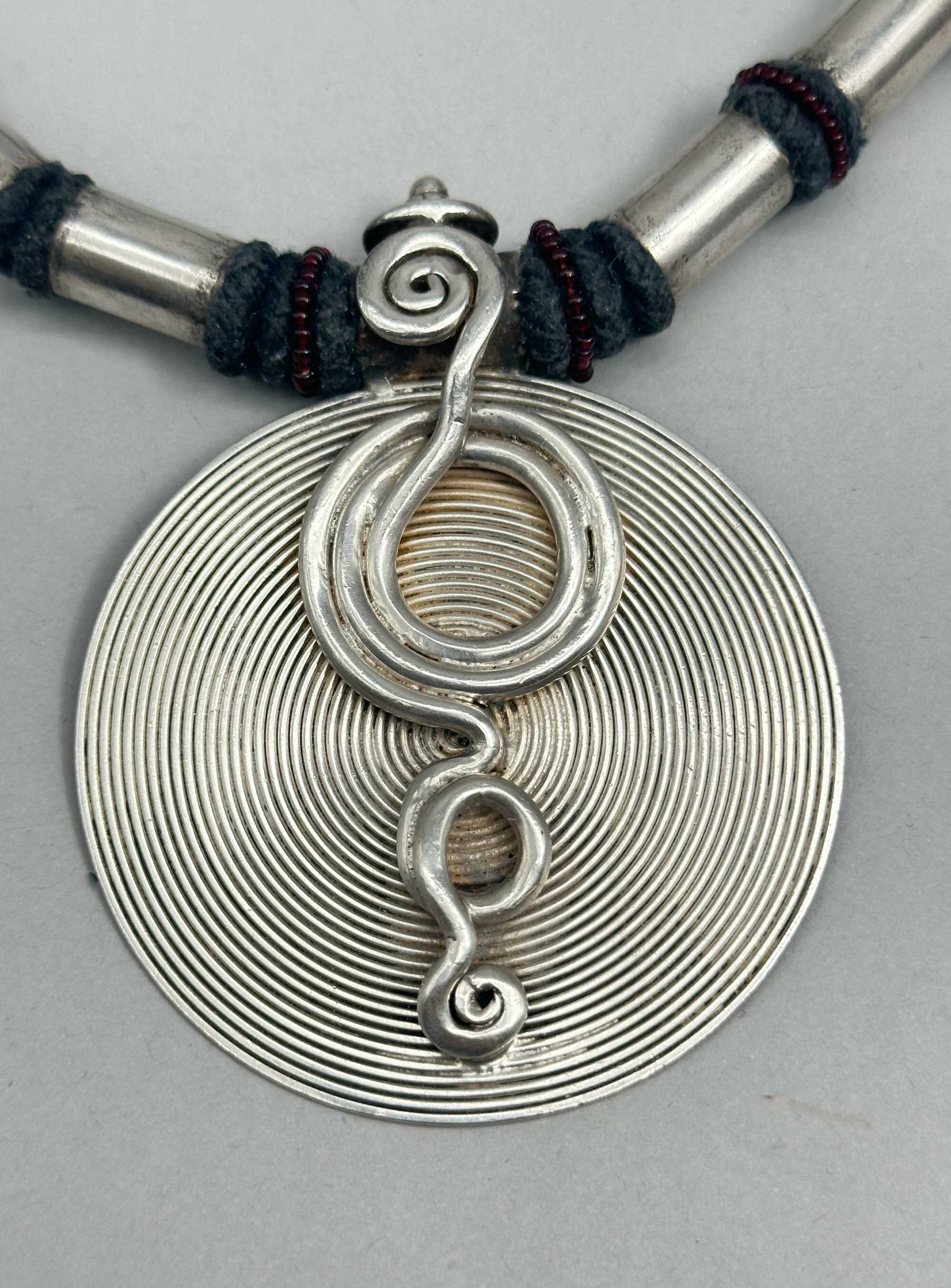
Indian tribal necklace, 19th century
Price: £175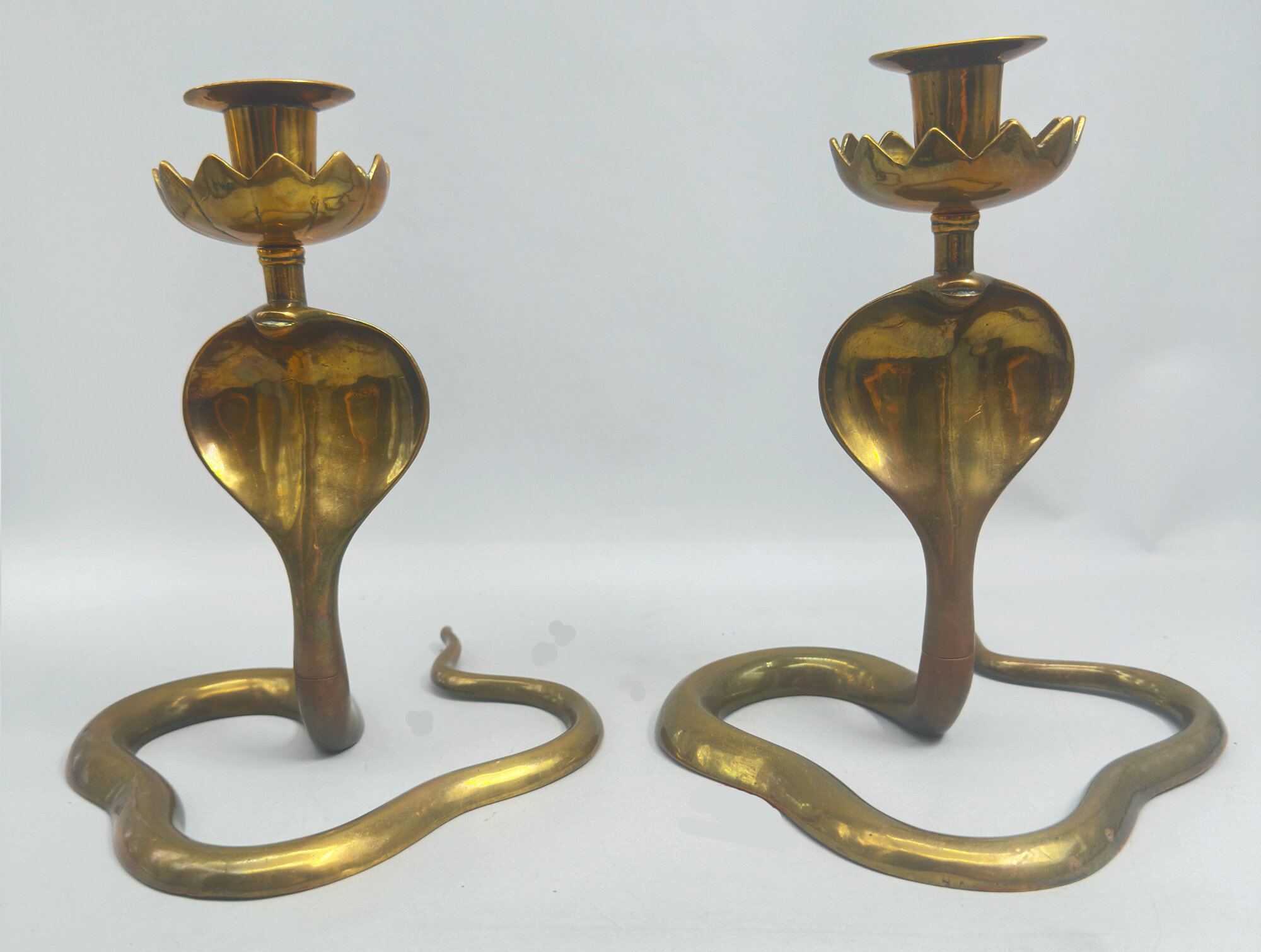
Fine quality pair of Brass Cobra Candlesticks, Indian first half C20th
Price: £150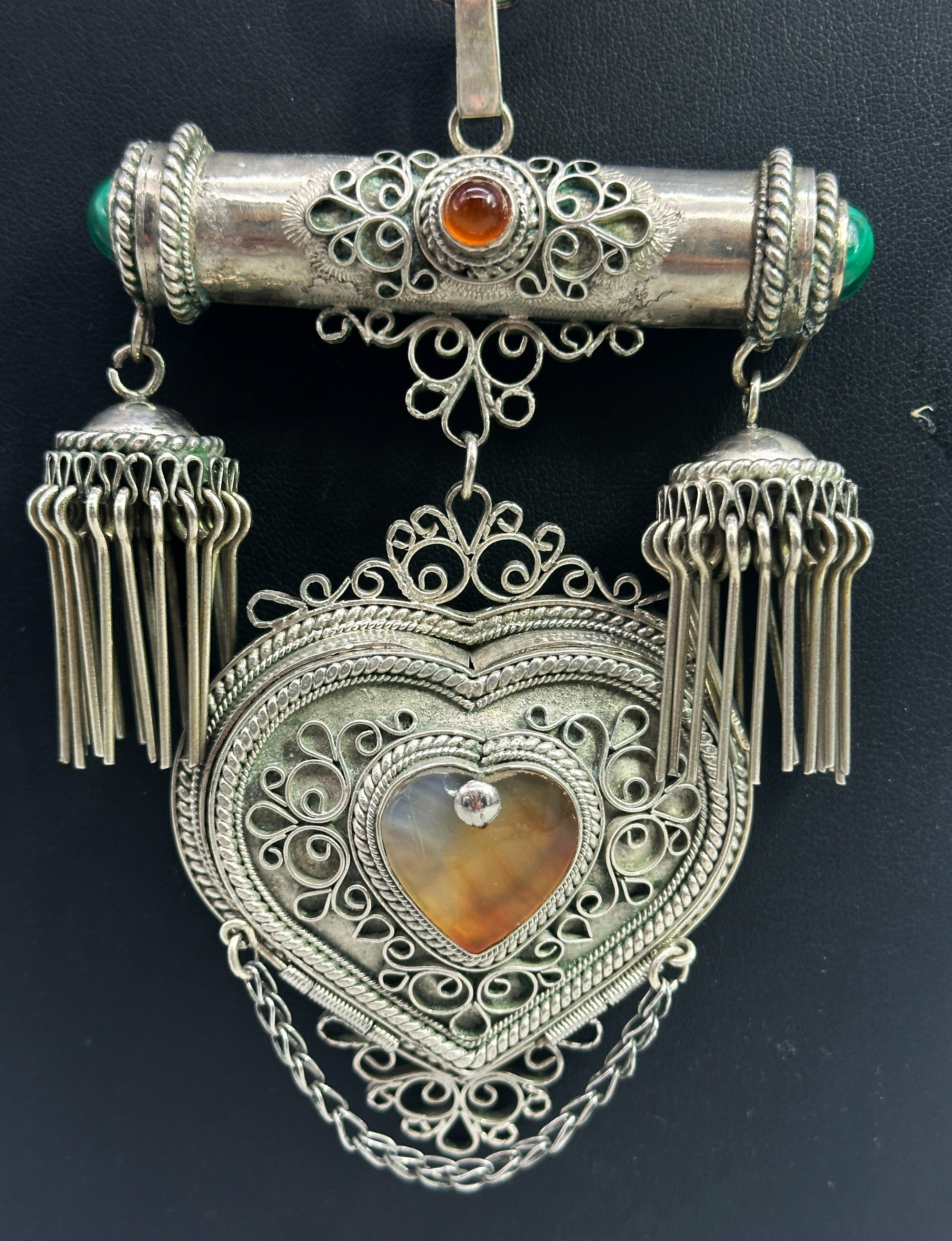
Large Islamic silver necklace with heart shaped box c1920
Price: £85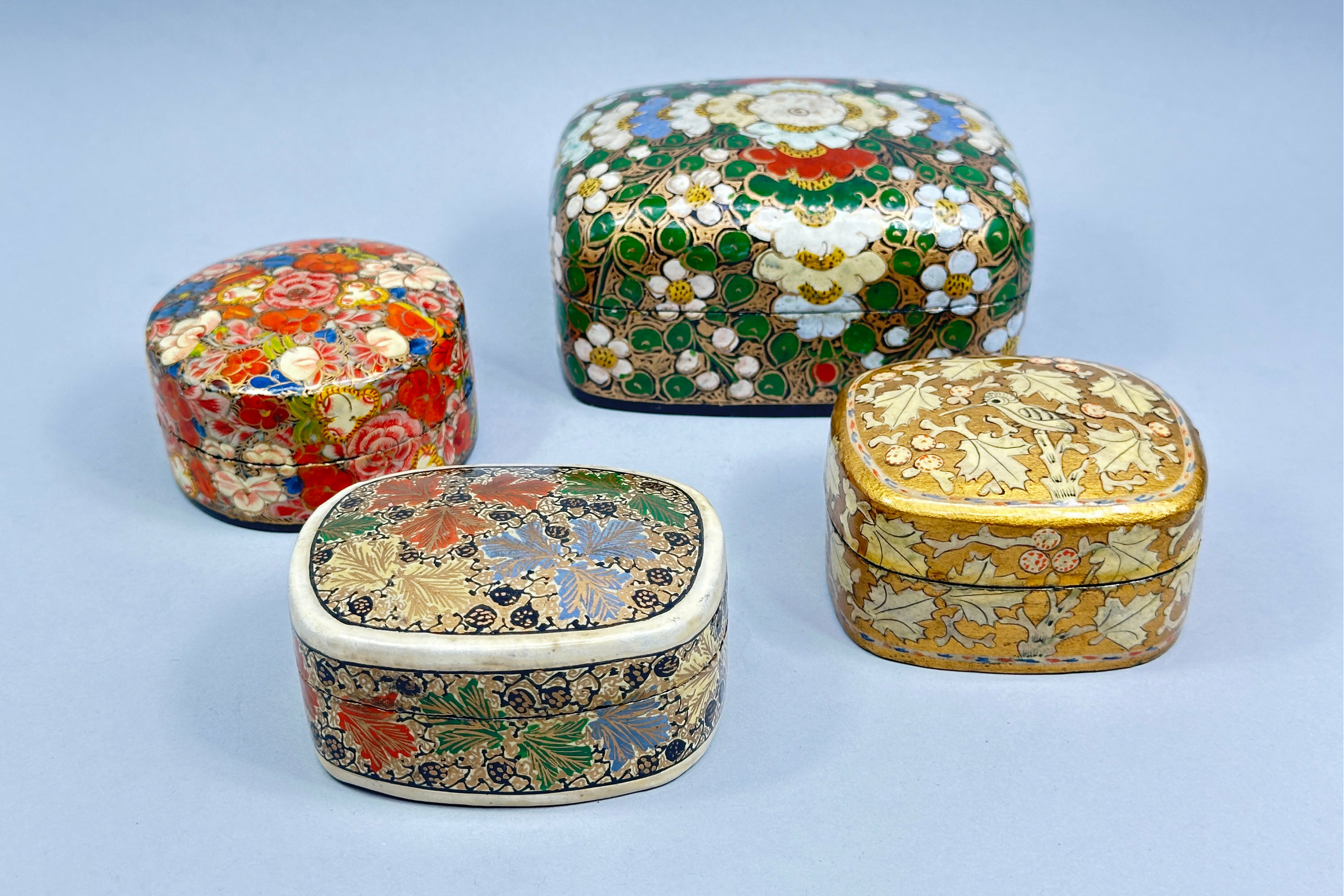
Four Papier-mâché Trinket Boxes, Kashmir, mid C20th
Price: £35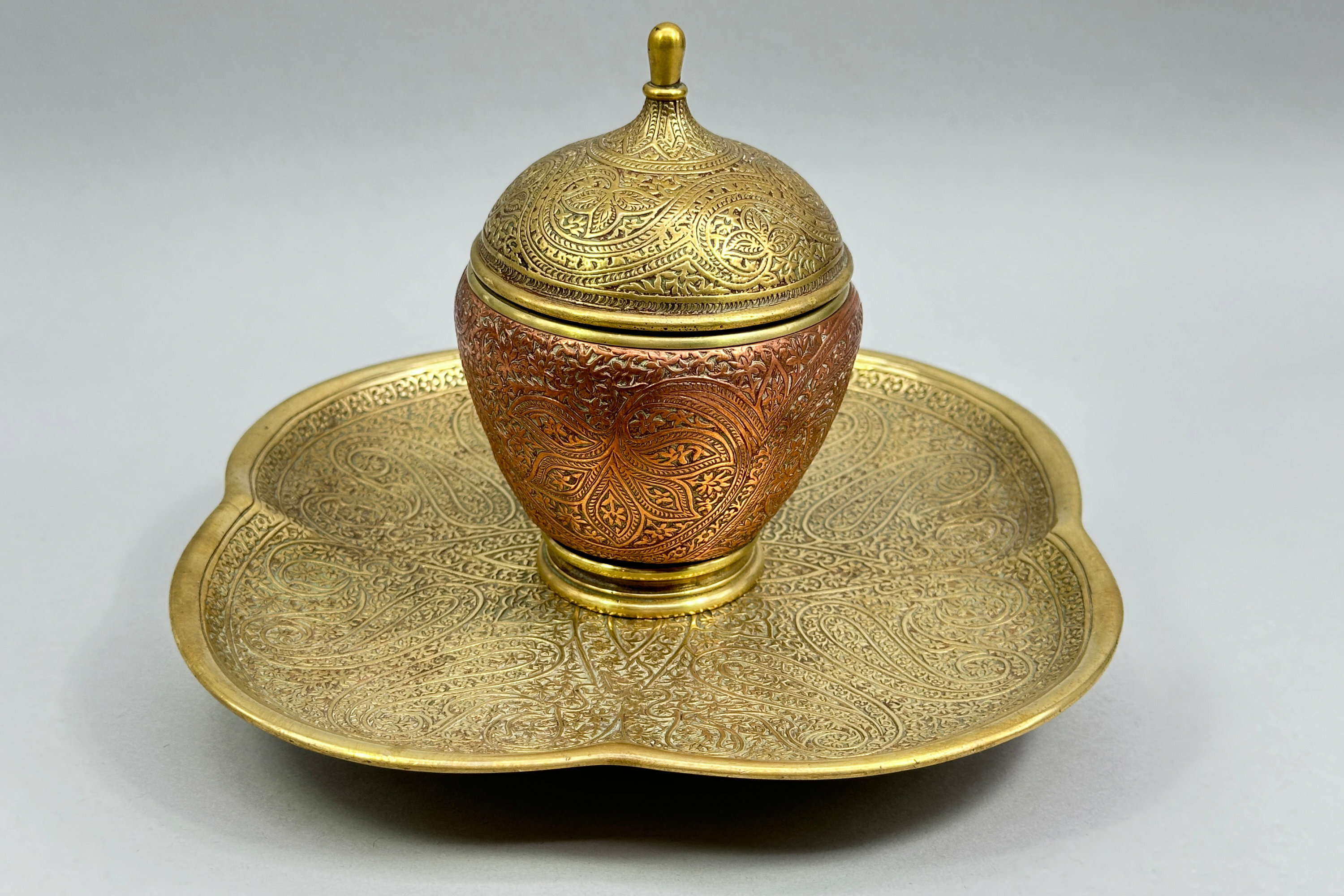
Indian Brass and Copper Inkwell, C20th
Price: £55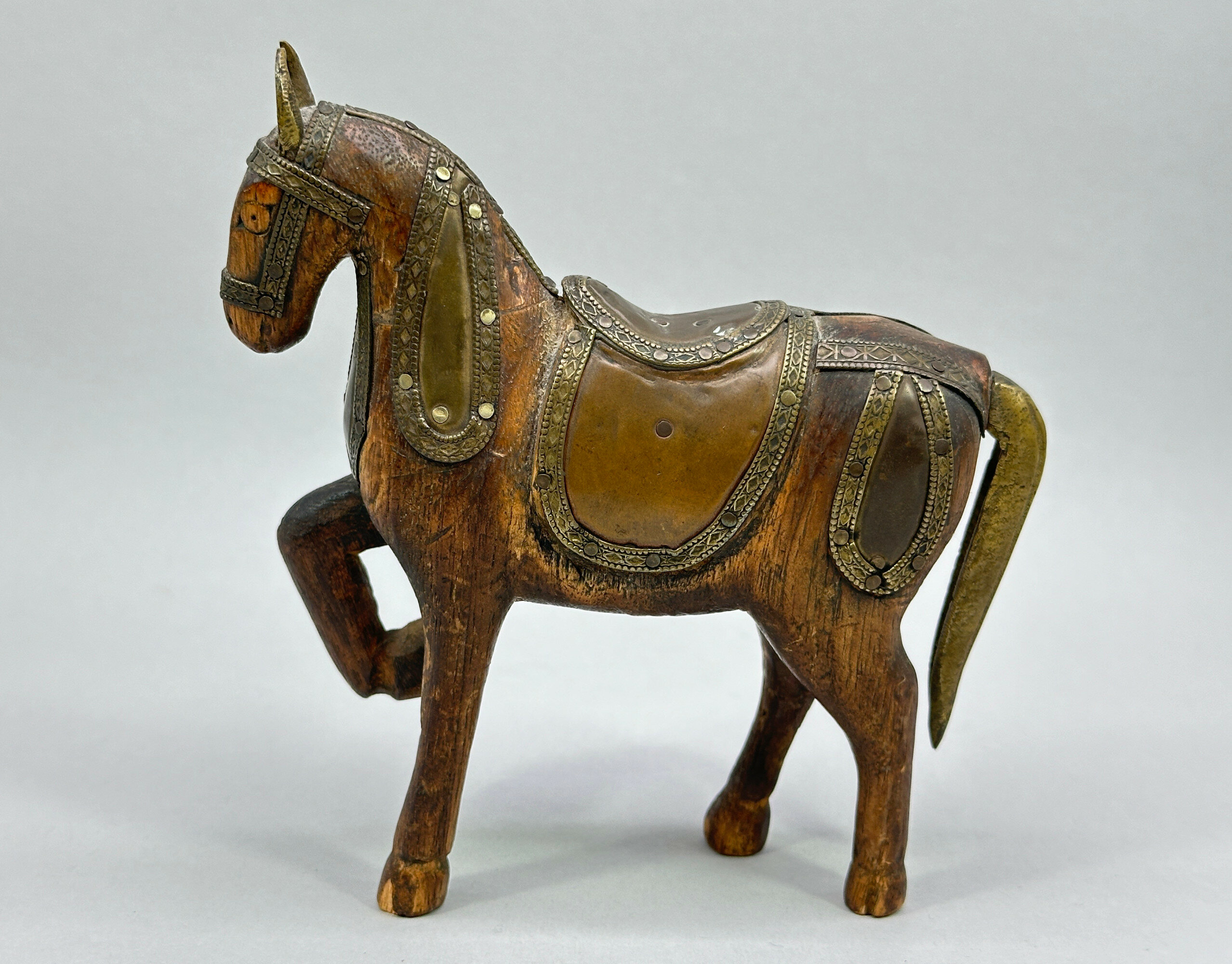
Indian wooden toy model of a Horse with metal fitments, early C20th
Price: £25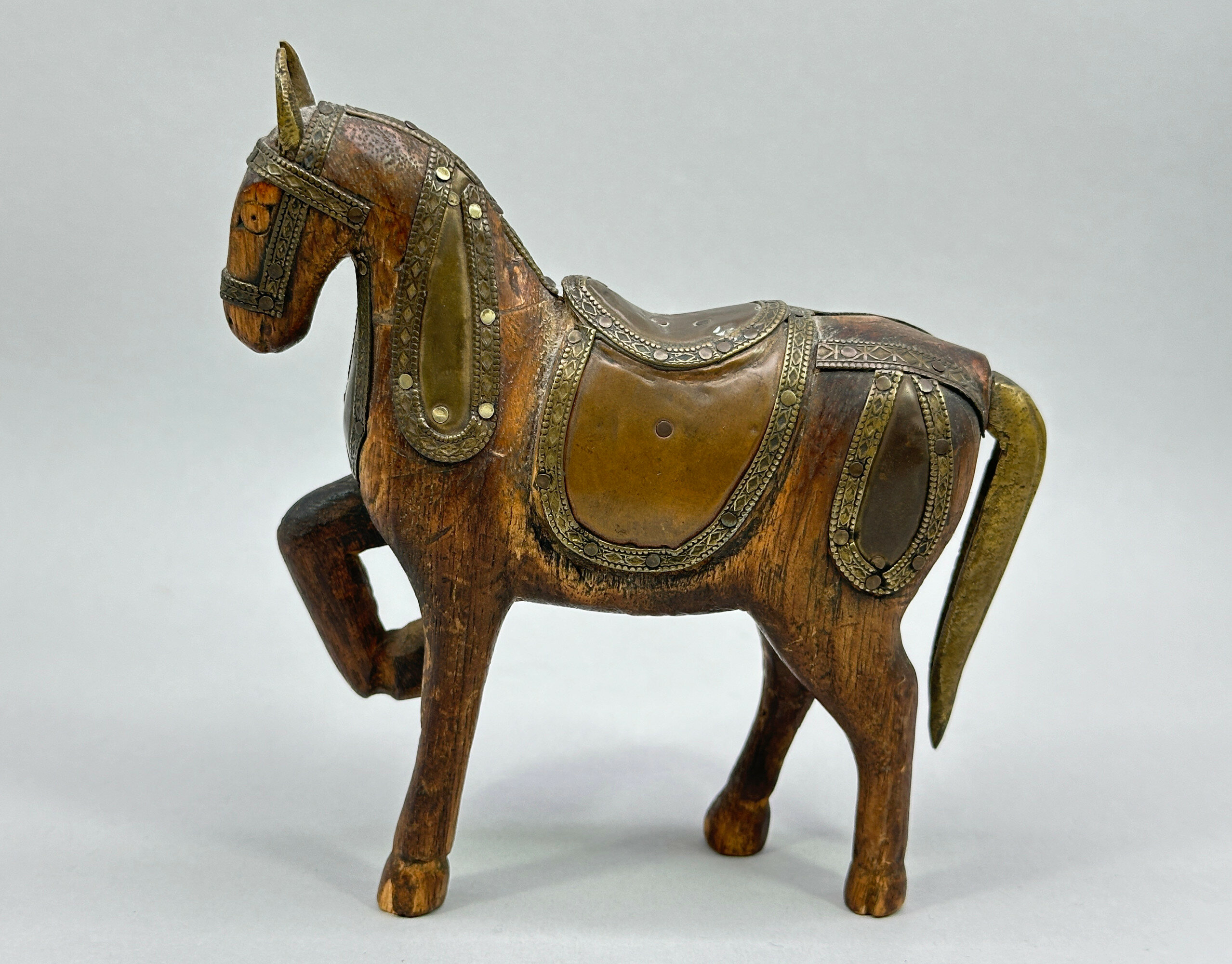
Indian wooden toy model of a Horse with metal fitments, early C20th
Price: £25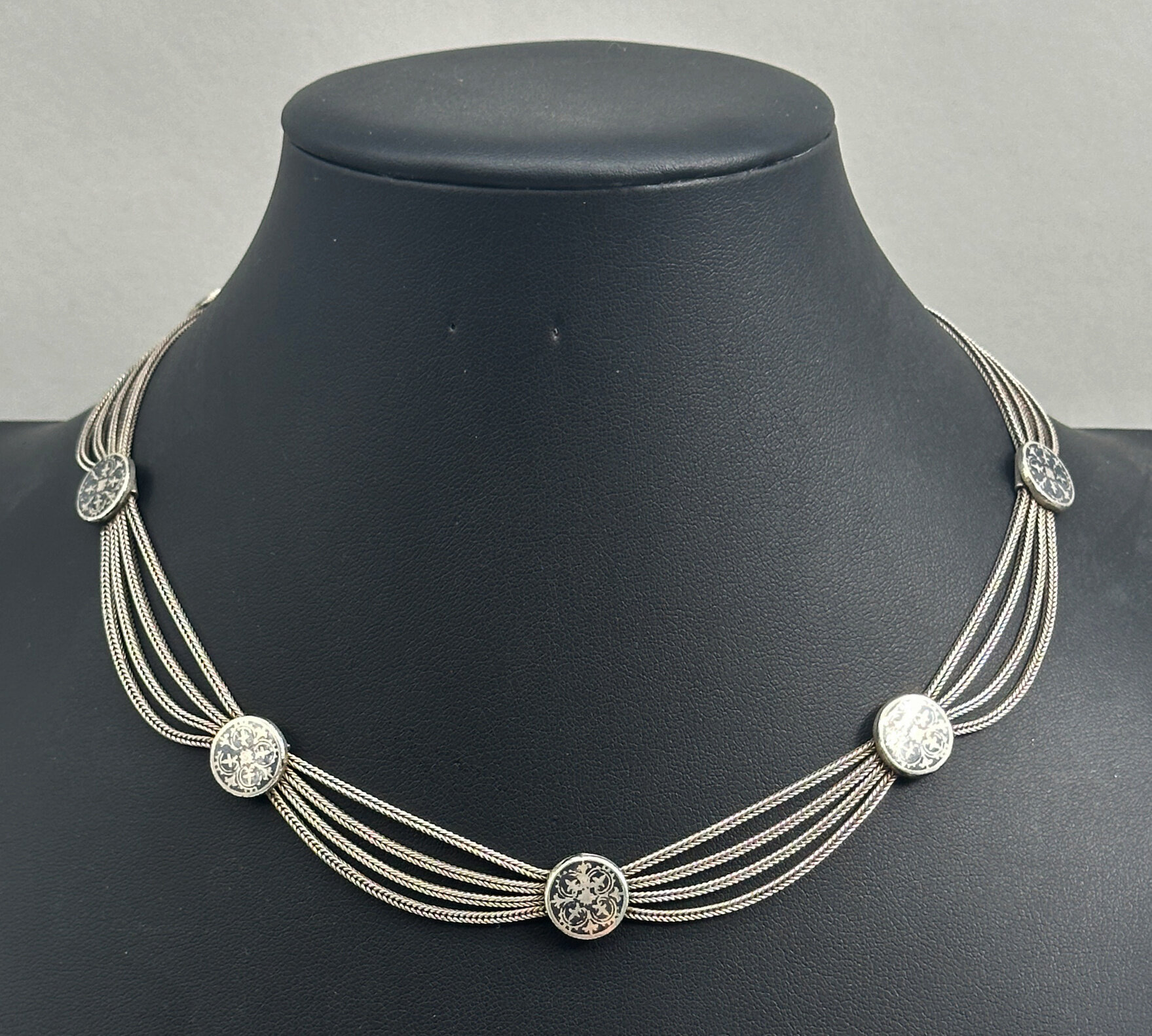
Islamic Silver Necklace with Niello work plaques, c1930
Price: £75The technique used is that of ‘niello’ work. (The word derives either from the classical Latin word ‘nigellum’ or the later mediaeval words ‘nigello’ or ‘neelo’.) Niello is a black mixture, usually of sulphur, copper, silver, and lead and used as an inlay on engraved or etched metal, especially silver. Added as a paste, it hardens to a black colour after firing and is then polished. Here it is the ground that formed from niello while the design shows though in silver, a less common version.
There is much skill in the craftsmanship here and the result is a piece of classic and timeless simplicity.